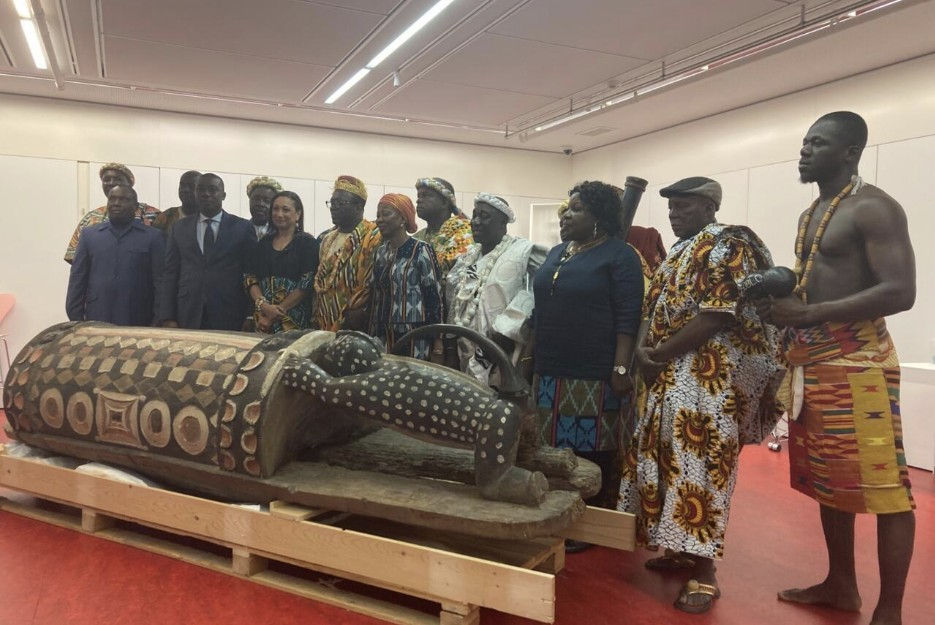Apo Whang-Od and Protecting our Intangible Cultural Heritage
- Paolo San Jose
- Apr 7, 2024
- 3 min read

Photo credit: © Christopher Newsom/Flickr
The remote village of Buscalan, tucked deep within the winding mountains of the Philippine Cordilleras, is home to who many believe to be the last female mambabatok.
Meet Apo Whang-Od, a 106-year-old Kalinga native who has practised the ancient tattooing technique of batok since she was 15 years old. Renowned nationwide in her native Philippines, the world was introduced to Whang-od when she became the oldest woman to grace the front cover of Vogue Philippines in 2023. Only speaking her native Kalinga tongue as well as regional Ilocano, Whang-Od’s feature put in the spotlight an endangered cultural practice that carries a rich tapestry of ancestral histories.
Whang-Od was trained in batok under the guidance of her father, tattooing a community of Butbut headhunters and women. A technique that dates back a thousand years, batok uses a mixture of coal and water as ink, meticulously hand-tapped on the skin using a pambatok - a bamboo stick with a pomelo thorn.
The batok tradition thrived in pre-colonial Philippines. It was practised by all ethnic groups across the Philippine archipelago, marking important milestones for people. It symbolised honour after a successful headhunt for men, and beauty for women. However, batok was repressed by Spanish colonialists in their efforts to Christianise the population. Modernisation and Western influence meant batok gradually fell out of practice.
Today, batok is a highly endangered tradition that survives among limited members of the Sulodnon, Lumad and Cordilleran peoples. Whang-Od carries with her a tradition so pertinent to her ancestral community, yet one that lies on the brink of extinction. As batok can only be passed through lineage, and Whang-Od has no children of her own, she chose her grandniece, Grace Palicas, as her apprentice, to keep the tradition and culture of Kalinga tattoos alive.
Batok is one of a number of endangered cultural traditions worldwide. While the need to preserve material heritage was recognised by UNESCO in 1972 with the enactment of the World Heritage Convention, it took almost 30 years of lobbying, especially from countries in Asia, Africa, and Indigenous peoples, for conversations around protecting intangible cultural heritage to take hold. It wasn’t until 2003 that UNESCO adopted the ‘Convention for the Safeguarding of the Intangible Cultural Heritage,’ which directs parties to take the steps necessary to protect its intangible cultures. It has since been ratified by 180 states.
The Convention led to the establishment of the UNESCO Intangible Cultural Heritage Lists, published and updated annually by an Intergovernmental Committee representing 24 member nations. These are a collection of three separate lists. Entries are categorised into either the ‘Register of Good Safekeeping Practices,’ the ‘Representative List,’ or those that need ‘Urgent Safekeeping.’ There are currently almost 700 entries across 140 countries, ranging from Singapore’s hawker culture and French baguette’s artisanal know-how, to at-risk traditions such as Indonesia’s Saman dance and Türkiye’s whistled language.
According to UNESCO, inclusion on the list encourages increased attention and visibility to the practices, protecting them from being decontextualised or appropriated. Inclusion also means member states must provide regular updates on the status of the practice and local safeguarding initiatives.
These programs strive to protect traditions that have endured several generations. Such traditions reflect the diverse ways communities respond to their environment, their histories, and are testament to the strong sense of continuity they provide. It is through highlighting the example of Apo Whang-Od, and the beauty of our endangered heritage, that we truly appreciate the richness of our cultural makeup. Intangible cultures are integral to our individual and collective identities, and their preservation is to preserve humanity as a whole.





Comments